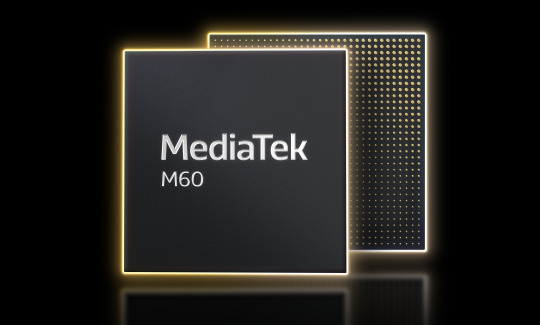#5g nr network
Link
#NB-IoT Frequency Band#Frequency Band#RF#IoT#internet of things#C&T RF Antennas Inc#5G#4G#3G#LTE#GSM#NR#Cellular#Wireless#Networks
1 note
·
View note
Text
youtube
5G NR, LTE, UMTS, EVDO, CDMA2k, GSM and Wi-Fi® Network Scanning | Skylight
Skylight™ is a software application that runs on Epiq Solutions software defined radios to provide low SWAP / high performance cellular survey and wireless network characterization. Skylight is for anyone who needs to understand the wireless network environment around them. Visit https://epiqsolutions.com/rf-sensing/skylight/
0 notes
Text
Step into 5G New Stage

One of the largest news of 2022 in the telecom industry, began with the freeze of 3GPP Rel-17 in the 96th plenary meeting of the International Communications Standards Organization 3GPP launched in Hungary. It labeled the official completion of the first stage of 5G, stepping into the new stage of 5G technology.
The freeze of R15 and R16 paved the way for the following progress of the 5G technology. Combined with the new needs and stronger capabilities of 5G, R17 provides a new "information highway" without traffic jam for the 5G network deployment in all industries.
The increased focus on the third version of global 5G New Radio (NR) standard, R17, is rising as it expanding 5G performance, scalability, and business-model flexibility.
The keywords of 3GPP R17: strengthen and expand
New concepts: Enhancements for better Extended Reality (XR), mmWave support up to 71 GHz, the introduction of 5G Reduced Capability (RedCap) New Radio, and Non-Terrestrial Network (NTN).
R17 further extend 5G capability compared with R16, including 5G based broadcasting capability, satellite communication, air-to-air base station, wireless side slice, and exploration of mutual enabling between artificial intelligence and 5G. It has low latency in powering end user service, improvements on customer experience, and rich functions in integration with core network to deliver dynamic bandwidth. Also, it supports integrated services for multiple operators supporting two SIM cards.
Ending and beginning
Many features of R17 standard "dynamic". The industry still needs to continue to improve the standard, or make a simplified design scheme in combination with the actual needs to promote the implementations of 5G. The freeze of the R17 standard also means that 3GPP's standard-setting work for 5G-Advanced will be in full swing.
As the first standard version of 5G-Advanced, R18 is on the way. Through R17's efforts in commercial performance improvement, introduction of new features and exploration of new directions, 5G will be introduced in more application scenarios and have a closer connection with our daily life and work.
1 note
·
View note
Text
5G Systems Integration Market Driven By Increase Investments In U.S., China, And Japan
The global 5G systems integration market size is estimated to reach USD 62.69 billion by 2030, registering a CAGR of 27.3% from 2022 to 2030, according to a new study by Grand View Research, Inc. Robust increase in the investments to deploy 5G network infrastructures across key countries, such as U.S., China, and Japan, has created the demand for integrating entire fifth generation infrastructure and applications across enterprises. This process will help enterprises to work as a centralized platform that will assist in reducing overall complexity. Thus, robust investments in building fifth-generation infrastructure, coupled with the growing need to set up a 5G-enabled ecosystem, are estimated to propel market growth.
Rapidly building smart cities have surged the adoption of numerous Internet of Things (IoT) devices across the globe. IoT devices require enhanced bandwidth to function appropriately. Thus, in order to provide high-speed broadband by supporting fifth-generation New Radio (NR), such as sub-6GHz and mmWave frequency bands, the entire infrastructure across these smart cities need to be upgraded in line with supporting fifth-generation radio network. Therefore, it is further estimated to boost the market growth from 2022 to 2030.
Gain deeper insights on the market and receive your free copy with TOC now @: 5G Systems Integration Market Report
Moreover, with the evolution of industry 4.0, the adoption of industrial sensors and collaborative robots is gaining popularity in the manufacturing sector across the globe. Therefore, to deliver seamless network connectivity to these above-mentioned devices, it is anticipated to raise the demand for 5G system integration services to make entire manufacturing facilities compatible with supporting next-generation 5G NR.
Rapidly rising digital transformation has disrupted the entire operation of the manufacturing industry. This has increased the trend of the machine-to-machine (M2M) communications to increase overall productivity as well as streamline the whole process. As a result, this has further expanded the need for high broadband to deliver uninterrupted connectivity to industrial sensors and robots. Therefore, the growing need for high broadband connectivity to establish seamless communication between machines is expected to elevate the demand for 5G system integration services in the next few years.
Furthermore, with the emergence of new technologies, such as network slicing and software-defined networking (SDN), the adoption of 5G system integration will witness a rapid surge to reduce overall enterprise infrastructure costs. Moreover, highly trained professionals must implement and manage the fifth-generation system integration services. This is anticipated to hinder market growth over the forecast period.
#5G System Integration Market Size & Share#Global 5G System Integration Market#5G System Integration Market Latest Trends#5G System Integration Market Growth Forecast#COVID-19 Impacts On 5G System Integration Market#5G System Integration Market Revenue Value
2 notes
·
View notes
Text
San Jose, CA – September 04, 2023 – ACL Digital has joined forces with Lekha Wireless, an expert in access technologies such as 5G NR, LTE, WiMAX, MANET SDR, and more. This collaboration aims to provide cutting-edge wireless connectivity solutions, specifically targeting 5G business opportunities in the Telecom and enterprise verticals. Together, they will focus on meeting customers' needs by fulfilling their 5G NR and 4G RAN requirements. The partnership will pave the way for innovative and tailor-made 5G and 4G solutions, designed to exceed customer expectations.
Lekha Wireless boasts a skilled Research and Development team that excels in creating new, and customizing existing access technologies to suit specific applications and network structures. Their expertise spans both software and hardware engineering, revolutionizing the world of connectivity. Collaborating closely with systems integrators and operators, Lekha Wireless transforms visionary concepts into tangible products, overseeing the entire journey from ideation to production and implementation.
For the past decade, ACL Digital has been providing customers with System Integration and Professional Services (SI/PS). Now, to capitalize on the possibilities presented by 5G and forthcoming opportunities, ACL Digital is joining forces with its partners to deliver tailored solutions that will empower customers with digital transformation capabilities. This alliance is viewed as a strategic move, enabling ACL Digital to deliver comprehensive engineering solutions and exceptional customer support.
Lekha Wireless' 5G and 4G RAN offerings will bolster the system integration and professional services already provided by ACL Digital. This partnership promises to empower businesses with the latest advancements in wireless technology and pave the way for transformative 5G solutions in the industry.
About Lekha Wireless
Lekha Wireless Solutions, founded in 2010, is a technology company headquartered in Bengaluru, known as the Silicon Valley of India. Specializing in turnkey 5G, 4G, WiMAX and SDR wireless connectivity solutions, Lekha Wireless caters to a wide range of industries, including Telecom, Industrial, Mission Critical, and Tactical applications. By providing comprehensive solutions, Lekha Wireless empowers its clients with reliable and efficient wireless connectivity for their specific needs.
About ACL Digital
ACL Digital, an ALTEN Group Company, is a digital product innovation and engineering leader. We help our clients design and build innovative products (AI, Cloud, and Mobile ready), content and commerce-driven platforms, and connected, converged digital experiences for the modern world through a design-led Digital Transformation framework.
Headquartered in Silicon Valley, ACL Digital is a leader in design-led digital experience, innovation, enterprise modernization, and product engineering services converging to Technology, Media & Telecom. The company has a workforce of 54,100+ spread across more than 30+ countries.
0 notes
Text
The easiest way to achieve this critical stage is to attach 5G NRs
Ciena networks

0 notes
Text
The easiest way to achieve this critical stage is to attach 5G NRs
Ciena networks

0 notes
Text
5G New Radios( NR) will be installed in locales formerly housing
Ciena networks

0 notes
Text

(2024-03-24 image ©vodafone) There have been a number of newspaper (and other) reports concerning Vodafone and in particular the merger with THREE. The CMA (Competition and Markets Authority) have decided that the merger will be bad for competition, and on the back of this are various articles by customer champions jumping on this decision. But let's look at the other side - Vodafone finances.
Vodafone (like the other mobile operators) paid way too much for 3G licenses in 2000 and have been suffering ever since. They had to build a new infrastructure to support 3G, then again the process for 4G, but at a lower cost for the licenses. Now 5G comes along, and again they bought some frequency and now are building 5G-NR. This was les costly but for customers, we do not see a significant improvement using 5G and were not going to pay more. Now they are building 5G-SA at more cost.
Vodafone have had to sell some of their overseas networks in order to finance much of this work. (conversly reducing competition in these countries). Now they see the merger as a way to reduce the massive cost of running a network. We as customers are complaining of the annual increases in SIM contracts, which I would agree with; but basically the contract cost is too low. Think about how much we all rely on our phones.
Does the UK need 4 independent networks and operators? Germany ( a much bigger country) has 3 and is by all accounts doing much better than the EU countries with 4 or 5 operators. Now how we get to 3 is not necessarily a merger of Vodafone and THREE but it is one way.
0 notes
Text
5G use cases and 5g application strategies

5G use cases changing the world
New 5G applications are emerging daily in tech and beyond. From autonomous vehicles to smarter cities, farming, and retail, the next wireless network standard will change how we interact with information, gadgets, and each other. What a better moment to examine how people are using 5G to change their reality.
What’s 5G?
Cellular networks are now 5G. 5G uses radio waves like 3G, 4G, and 4G LTE. Due to increases in latency, throughput, and capacity, 5G can download and upload quicker than prior networks.
How does 5G differ from existing wireless networks?
5G internet technology has been heralded as a breakthrough for consumers and companies since its 2019 introduction. This is mostly because its networks can manage massive amounts of data from sophisticated devices.
Over time, mobile technology has rapidly increased daily data use. Other transformative technologies like AI, IoT, and ML demand greater speeds than 3G and 4G networks. With its lightning-fast data transmission speeds, 5G lets newer technologies work as intended.
The main distinctions between 5G and earlier wireless networks are listed below.
Size: 5G transmitters are smaller than previous networks, enabling discreet deployment in out-of-the-way locales. In 5G networks, “cells” geographical regions that all wireless networks need for connectivity are smaller and use less power.
Error rates: 5G’s adaptive Modulation and Coding Scheme (MCS), which WiFi devices utilize to transfer data, is more powerful than 3G and 4G. This lowers 5G’s Block Error Rate (BER), which measures error frequency.
Bandwidth: 5G networks can transmit on more bandwidths than earlier wireless networks due to their greater radio frequency spectrum. They can support more devices at once.
Lower latency: 5G’s low latency is a major improvement over prior generations. This implies 5G connections are quicker than other networks for tasks like downloading files and working in the cloud.
How does 5G work?
5G networks are divided into cells like other wireless networks. Smartphones, PCs, and IoT devices connect to the internet via radio waves between an antenna and a base station in each cell. 5G networks use the same technology as 3G and 4G networks, but they have reduced latency and can give download rates up to 10 gigabits per second.
More 5G gadgets are being created, increasing demand for 5G connection. Popular ISPs like Verizon, Google, and AT&T provide 5G networks to households and businesses. Statista reports that over 200 million households and organizations have bought it, with that figure predicted to treble by 2028.
Let’s examine three technical advances that make 5G special
New telecom specs
New radio access technology is provided by the 5G NR (New Radio) cellular network standard for all 5G mobile networks. In 2018, the global 3FPP set 5G device and application design guidelines.
Success led to rapid growth of 5G networks in the following years. Currently, 45% of networks globally are 5G capable, but Ericsson predicts that figure will climb to 85% by the end of the decade.
Independent virtual networks (slicing)
Operators may provide several virtual networks (in addition to public ones) on 5G networks. This new wireless network permits more distant tasks with higher security than ever before. On a 5G network, organizations may establish use cases or business models and give them their own virtual network, greatly improving employee experience by increasing customizability and security.
Private networks
Besides network slicing, a 5G private network may improve customization and security over prior wireless networks. Global enterprises choose private 5G network designs over public networks to provide their staff greater autonomy and mobility.
5G Use cases
Now that we know how 5G works, let’s examine some of its interesting uses.
Autonomous vehicles
Most next-generation autonomous vehicle capabilities use 5G technology, from taxis to drones. Due to 3G and 4G data transmission restrictions, fully autonomous cars remained a pipe dream until 5G. With 5G’s lightning-fast connection rates, automobiles, trains, and more can travel quicker than ever, changing how systems and gadgets connect, communicate, and cooperate.
Smart factories
5G, AI, and ML will make manufacturing smarter, automated, efficient, and resilient. Due to 5G connection and AI/ML capabilities, robots are doing numerous monotonous but required equipment maintenance and optimization jobs. 5G is projected to affect fuel efficiency, equipment lifecycles, and home delivery in this field.
The Drones and cameras linked to IoT-enabled smart devices may detect and deliver items faster and prevent theft on a crowded production floor. This is better for the environment and customers and frees up personnel to focus on their strengths.
SMART cities
A hyper-connected urban environment that employs 5G network speeds to innovate law enforcement, garbage disposal, and catastrophe mitigation is becoming a reality. Some cities utilize 5G-enabled sensors to study traffic trends in real time and change signals to optimize traffic flow, congestion, and air quality.
5G power grids monitor supply and demand in densely populated regions and use AI and ML to “learn” peak and low energy usage. Energy saving and trash reduction may reduce carbon emissions and help communities meet sustainability objectives using this procedure.
Smart health care
Daily, hospitals, physicians, and the healthcare business benefit from 5G networks’ speed and dependability. Remote surgery using robots and a 5G-connected HD live feed is one example. Mobile health, where 5G offers field workers immediate access to patient data and medical history, may help them make wiser, quicker choices and save lives.
Finally, as the pandemic showed, contact tracking and outbreak mapping are essential to population safety. 5G’s fast and secure data delivery lets professionals make better informed choices that affect everyone.
Improved employee satisfaction
5G and other technologies will automate and enhance employee activities and experiences. Consider VR and AR. Stockroom workers, transportation drivers, and others utilize VR and AR. This workforce uses wearables linked to a 5G network for high-speed data transmission rates that increase functions like:
Live views: 5G allows real-time equipment, event, and person viewing. Professional sports broadcasters may utilize this technology to remotely call events from outside the stadium.
Digital overlays: Warehouse and industrial workers using smart glasses or smartphones may get real-time insights from IoT apps, such as maintenance instructions or spare component names and locations.
Drone inspections: Remote equipment or project site inspections are a primary source of employee harm. 5G drones can monitor equipment and project sites and scan hard-to-reach gauges safely.
Edge computing
Edge computing, which permits calculations closer to data sources, is becoming the norm for organizations. According to this Gartner white paper (link outside ibm.com), 75% of corporate data will be handled at the edge by 2025, up from 10% presently. This change saves organizations time and money and improves data management. It would be impossible without 5G’s increased speed requirements.
The organization can quickly transmit, manage, and secure vast amounts of data with ultra-reliable edge computing and 5G. These twin technologies will minimize latency, increase speed, dependability, and bandwidth, giving organizations quicker, more complete data analysis and insights.
5G solutions with IBM Cloud Satellite provide significant corporate prospects, but need a fast platform. IBM Cloud Satellite allows you execute programs reliably on 5G networks in on-premises, edge computing, and public clouds. IBM Cloud safe and auditable communications allow it all.
Read more on govindhtech.com
#5g#5gtechnology#5gnetwork#5gnetworks#govindhtech#5gusecases#news#technews#technology#technologynews#technologytrends
0 notes
Text
Imagine a bustling orchestra, instruments playing in perfect harmony. Just like the conductor ensures seamless communication between sections, NGAP acts as the maestro in 5G networks, orchestrating communication between the core and radio access.
Read More:- https://techlteworld.com/ngap-ng-application-protocol-in-5g-nr/
0 notes
Text
New opportunities for IoT may be opened up by RedCap

What is RedCap?
3GPP R17 was finally frozen last week. As part of it, the specification of 5G Reduced Capability (RedCap) New Radio is introduced, which may open up the new opportunities for "middle-range" IoT, targeting reduced capability use cases for industrial, wearables.
As we all know, NB-IoT is the light-weight LTE network for IoT applications. In this way, RedCap can be also seen as the simplified 5G NR.
Why we need RedCap?
In some cases, the network capacity of eMBB, uRLLC and mMTC can not totally meet the requirements. For example, in 5G smart manufacturing, controlling robots requires wide bandwidth and low latency, while CCTVs in the factory do not. This is the reason why RedCap can complement the space among three major 5G application scenarios.
Some of the key features of RedCap:
· Interconnection with 5GC
· Support a wide range of spectrum
· Lower power consumption
· Reduce the complexity of equipment to lower the CAPEX
It can be also redefined with 5G network slicing, uRLLC, enhanced coverage related technologies, adapting to diversified middle ground IoT applications, to meet the needs of various industries such as smart city, manufacturing etc.
Looking forward to an intelligent IoT world!
4 notes
·
View notes
Text
MediaTek Expands its Product Portfolio for 5G RedCap Support

The arrival of 5G RedCap tech has certainly given rise to new tech innovations in the way of software and hardware, and a lot of manufacturers have deemed it wise to invest in research and development towards adoption and support for modern 5G solutions. With that being said, MediaTek recently announced that it was expanding its portfolio of modems and chipsets to include 5G RedCap support, in the form of the M60 modem IP and MediaTek T300 chip series.
With these new hardware advancements, MediaTek hopes that it will be easier to facilitate the transition to 5G-NR for different applications for require long-lasting and efficient battery life, such as wearable devices, light-weight AR hardware, IoT modules, and devices built with edge AI in mind. JC Hsu, Corporate Senior Vice President at MediaTek states:
“Our RedCap solutions are a significant part of our mission to democratize 5G, providing our customersthe ability to optimize components and deliver 5G-enabled devices from a range of applications and arange of price points. The migration to 5G RedCap will replace legacy 4G/LTE solutions, offering significantly better power efficiency and more reliable user experiences compared to leading edge 5G eMMB modem solutions and legacy 4G LTE Cat 4 and Cat 6 devices.”
For those unfamiliar with the term, RedCap is short for "reduced capability," and is designed to give NR consumers the benefits of 5G, such as enterprise solutions and industrial devices. RedCap makes use of more modern 5G networks and is developed to be optimized for devices with low bandwidth requirements, with lesser costs and complexities involved.
MediaTek says that its T300 series is the world's first 6nm Radio Frequency System-on-chip solution that's designed to work with RedCap, and will allow brands to fully utilize the advantages of the growing RedCap adoption within different industries and such. It's built on TSMC's 6nm process and integrates a single-core Arm Cortex-A35 in a more compact PCB area. Additionally, the T300 is capable of supporting up to 227 Mbps downlink and 122 Mbps uplink data rates.
With that in mind, MediaTek adds that both the T300 series and M60 will support with 3GPP R17 standard, and are developed to be power efficient with low latency. They're also equipped with MediaTek’s UltraSave 4.0 technology; the M60 in particular offers up to a 70% reduction in power consumption compared to similar 5G eMBB solutions, and up to 75% power savings compared to 4G LTE solutions.
In terms of market availability, MediaTek says that T300 series devices will be sampled in the first half of 2024, with commercial samples in the second half of 2024.
Read the full article
1 note
·
View note
Text
5G Technology Market Size, Growth, Demand and Forecast by 2030
According to a recent report published by Allied Market Research, titled, “5G technology Market by Component, Connectivity, Application and End Use: Global Opportunity Analysis and Industry Forecast, 2021–2030,” the global 5G technology market was valued at $5.13 billion in 2020, and is projected to reach $797.80 billion by 2030, growing at a CAGR of 65.8% from 2021 to 2030.
Global operators have started launching new 5G networks in early 2019. Also, all major phone manufacturers are commercializing 5G phones. Furthermore, 5G is designed to deliver peak data rates up to 20 Gbps based on IMT-2020 requirements. Moreover, the Qualcomm Technologies’ flagship 5G solutions, the Qualcomm Snapdragon X65 is designed to achieve up to 10 Gbps in downlink peak data rates. In addition to higher peak data rates, 5G is designed to provide much more network capacity by expanding into new spectrum, such as mmWave. 5G can also deliver much lower latency for a more immediate response and can provide an overall more uniform user experience so that the data rates stay consistently high even when users are moving around. And the new 5G NR mobile network is backed up by a Gigabit LTE coverage foundation, which can provide ubiquitous Gigabit-class connectivity.

On the basis of connectivity, the massive machine type communication (MMTC) segment is expected to grow at a fastest rate during the forecast period. As use of MMTC in sensor network in metering, agriculture, building, logistics, homes, and other applications are expected to be the key contributor to the growth of MMTC in the future 5G technology market.
By region, Asia-Pacific is the largest segment during 2020 and is expected to grow at the fastest CAGR during the forecast period due to wide presence of younger population in Asia-Pacific, which is increasing demand for digital applications including social gaming, media, and others. Furthermore, 5G network is expected to provide high data rate and thus, meet consumer expectations, which act as factors that boost the growth of the 5G technology market in the region.
The 5G technology market growth has been positively impacted by the COVID-19 outbreak. This is attributed to the fact that consumer trend toward 5G technology is rapidly increasing and moreover, many industry verticals have fast-tracked their investment in 5G adoption to make sure that they will be ready to embrace the new ways of collaboration and operations by adopting technologies such as artificial intelligence-based solutions for real-time interaction with consumers. In addition, the sudden workspace change has opened up many avenues for transformation such as need for ultra-high-speed connections at employee homes, video and mixed channel collaboration among employees, secure remote operation of critical business processes and others. It is now observed that advanced video/audio setups are being installed in homes to accommodate the needs of the new workspace. Thus, the 5G technology market has been positively impacted by the COVID-19 pandemic.
Inquiry Before Buying: https://www.alliedmarketresearch.com/purchase-enquiry/2070
Key findings of the study
By connectivity, the enhanced mobile broadband (EMBB) segment led the 5G technology industry in terms of revenue in 2020.
By end use, the manufacturing segment accounted for the highest 5G technology market share in 2020.
By region, Asia-Pacific generated the highest revenue for the 5G technology market size in 2020.
The key players profiled in the 5G technology market are Deutsche Telekom AG, Ericsson, Huawei Technology, Nokia, Orange S.A., Qualcomm Inc., Telecom Italia, Telstra, T-Mobile, and Intel Corporation. These players have adopted various strategies to increase their market penetration and strengthen their position in the 5G technology industry.
About Us:
Allied Market Research (AMR) is a full-service market research and business-consulting wing of Allied Analytics LLP based in Portland, Oregon. Allied Market Research provides global enterprises as well as medium and small businesses with unmatched quality of “Market Research Reports Insights” and “Business Intelligence Solutions.” AMR has a targeted view to provide business insights and consulting to assist its clients to make strategic business decisions and achieve sustainable growth in their respective market domain.
0 notes
Text
No More Guesswork: Simple Ways to Confirm 5G on Your Phone

In today's fast-paced digital world, having access to lightning-fast internet is no longer a luxury; it's a necessity. The rollout of 5G technology has brought us one step closer to the dream of seamless connectivity, but many smartphone users are left wondering, "Does my phone support 5G?" If you're in Michigan and eager to harness the power of 5G internet, you've come to the right place. In this article, we'll explore some simple ways to confirm if your phone is 5G-enabled, ensuring that you can make the most of this cutting-edge technology.
Understanding the 5G Revolution in Michigan
Michigan is one of the states at the forefront of the 5G revolution. Major cities like Detroit, Grand Rapids, and Lansing have seen significant investments in 5G infrastructure. With its promise of higher speeds, lower latency, and the ability to support a plethora of smart devices, 5G is set to transform the way we live and work.
However, to fully enjoy these benefits, your phone needs to be 5G-compatible. But how can you tell if it is? Let's dive into some straightforward methods to confirm if your phone can harness the power of 5G internet in Michigan.
Method 1: Check the Phone's Settings
The easiest way to determine if your phone supports 5G is to check its settings. Here's how you can do it:
Go to your phone's "Settings" menu.
Look for the "Network & Internet" or "Connections" option.
Within this menu, search for "Mobile Network" or "Cellular Network" settings.
If you see an option for 5G, your phone is 5G-compatible. You may also see "LTE" or "4G" settings, which indicate that your phone is not 5G-enabled.
Method 2: Consult Your Phone's Manual
Every smartphone comes with a user manual that provides detailed information about the device's features and specifications. This is a valuable resource for confirming 5G compatibility.
Locate your phone's user manual, either in print or online.
Check the specifications section.
Look for terms like "5G," "5G NR," or "5G support." If you find any of these, your phone is 5G-ready.
Method 3: Visit Your Carrier's Website
The major carriers in Michigan, such as Verizon, AT&T, and T-Mobile, have extensive information on their websites regarding 5G-compatible devices. Here's how you can use this resource:
Visit the website of your mobile carrier.
Find the section that lists compatible 5G phones.
Search for your phone's model in the list. If it's there, you're good to go!
Method 4: Use a Third-Party App
Several third-party apps are available that can help you determine if your phone supports 5G. Some popular options include "CPU-Z" and "4G LTE Only Mode Switch." These apps provide information about your phone's hardware and network capabilities.
Go to your device's app store (Google Play Store for Android or the Apple App Store for iOS).
Search for and install a 5G compatibility app.
Open the app and follow the on-screen instructions.
Method 5: Contact Your Mobile Carrier
If you're still uncertain about your phone's 5G compatibility, don't hesitate to reach out to your mobile carrier's customer support. They can provide accurate information about your specific device and network capabilities.
Conclusion: Unleash the Power of 5G Internet in Michigan
In Michigan, where 5G is becoming increasingly prevalent, staying connected with 5G is a game-changer. With the right phone, you can enjoy faster downloads, smoother video streaming, and a more responsive online experience. By following these simple methods, you can confirm whether your phone is 5G-ready, ensuring that you're making the most of the 5G revolution in the Great Lakes State.
No more guesswork is needed. Your smartphone can be your gateway to the exciting world of 5G internet, connecting you to the limitless possibilities that this technology brings. So, why wait? Check your phone today and embrace the power of 5G in Michigan. Enjoy the incredible speeds, and experience a new era of connectivity that's set to transform the way we live, work, and play.
0 notes
